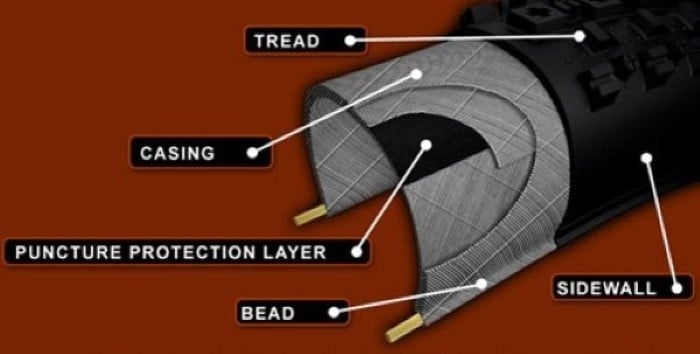Featured Brands
Recommended Products
WINTER20
Get free shipping, on most items, with your $50 purchase today! Same day shipping on most orders if placed by 3pm PST.
PLEASE NOTE:
This offer is only available to physical shipping addresses in the 48 continental United States (no PO Boxes), and some exclusions apply.
Oversize Charges
Some large and/or heavy items are subject to additional oversize charges that are separate from standard shipping costs.
Bike Build Process
All bikes are built, tested, tuned, and ready to ride upon shipment. The bike build process typically takes 2-3 days to complete depending on the bike model and the complexity of the build.
Stock Status
Orders for in-stock items placed by 3PM PST usually ship on the same day. Orders that include special-order or backordered items may be subject to shipping delays depending on product availability. Refer to estimated delivery times in cart when selecting shipping options.

Our Gear Advisors are Ready to Help.

Mountain bike tires come in all sizes, disciplines and capabilities, and having the right tires, or not, can make or break your performance on the bike. Not only are there different types of mountain bike tires that are specific to the type of bike that you have, but there are different sizes and widths, tread patterns, rubber compounds, casing options and more that you will need to take into consideration. This article will teach you about what makes up a mountain bike tire, the common tire sizes in each category, different tire treads and rubber compounds, and some frequently asked question regarding new mountain bike tires.
Once you have a better understanding of all the different types of mountain bike tires and the type of tires that are best for you, head back into our website and checkout the huge selection of mountain bike tires JensonUSA offers.
In this article, we’ll teach you about:

The size and width of your mountain bike tires will play a huge role in your capabilities and ride feel when on the bike. Generally, mountain bikes will have 26", 27.5" or 29" diameter tires that are from 2.0"-wide all the way up to 3.8"-wide for some plus-sized tires.
Mountain bikes come with three different diamerer wheel sizes, 26", 27.5" or 29". There are advantages and disadvantages to each size of wheel so we will break it down for you:
Mountain bike tires come in all different widths. Each mountain riding discipline has a general range of widths that correlate with the style of tire it is, but there are exceptions and personal preferences. Wider tires will be heavier than skinnier tires, but they will provide more traction with the dirt.
| Size | Discipline |
| 2.0” – 2.3” | Cross Country |
| 2.3” – 2.5” | Trail/All-Mountain |
| 2.4” – 2.6” | Enduro and Downhill |
| 2.8 – 3.8" | Plus |

Cross-country tires are generally between 2.0"-2.3" wide, have a lightweight casing and a fast-rolling tread. Cross-country tires put speed and finesse at the top of their priority list and will not have the same type of protection you will find on enduro or downhill tires. The tread is usually ramped for lower rolling resistance and the tread height is small to medium in height for efficient rolling on hardpack to loose over hard dirt.

Trail and all-mountain tires are generally 2.3" to 2.5"-wide and have moderate-sized tread blocks. These tires come with the most variety and can be found with fast rolling or grippy rubber compounds, lightweight or durable casing options and tread patterns that specialize in low rolling resistance or maximum traction.

The most aggressive tires in mountain biking. These tires are generally 2.4" to 2.6"-wide and have durable casings that are stiffer and more protective. Enduro and downhill tires have tread compounds that specialize in grip and tread patterns with large blocky tread for maximum traction.

Plus-sized tires are generally 2.8"-3.8" and have tread patterns and rubber compounds designed for trail riding. Moderate-sized tread blocks, combined with the increased surface area of the extra width, provides maximum traction that will enhance the capabilities of your bike.
The tread you have on your tires is one of the biggest factors in how your tires will perform on the trails you ride. Different tread patterns, as well as the size of the lugs, are usually specific to the style of riding you do and the terrain you ride in. For example, you would not want large, spaced-out lugs if you are riding cross country on a hardpacked trail and you wouldn’t want small, fast-rolling tread when you are riding downhill on loose technical terrain.
The rubber compounds a mountain bike tire is equipped with has a direct correlation to the rolling speed, grip and longevity of the tire. Tires can have single, double, or multiple rubber compounds to maximize durability or for a balance of grip and rolling resistance. Different durometer rubber is used based on the designated use of the given tire and plays a part in how much traction, how quickly they wear, and how much rolling speed a tire has.
JensonUSA carries a plethora of all types of mountain tires. From fast rolling cross-country tires, to downhill and enduro tires that specialize in grip, we got what you need.
Maxxis, Schwalbe, Continental, Vittoria and Specialized all make top-quaility mountain bike tires.
Mountain bike tires vary greatly in price, and like most things, you get what you pay for. More advanced rubber compounds and more protective casing options will cost more than a standard tire. Mountain bike tires range from $50 to $100.
Wider mountain bike tires will contact more of the dirt and provide a more stable platform when riding and have more traction. On the other hand, wider tires will also be heavier.
There are three numbers on a bike tire that you should pay attention to. The first number is the ETRTO, which is the European tire and rim technical organization, and is another measurement of circumference. 26" tires have an ETRTO of 559, 27.5" tires are 584, and 29" tires are 622. Next, is the size and width of your tires. 26, 27.5, or 29 is the diameter of your wheel in inches and is followed by the width in inches, usually 2.0"-3.8". A 27.5" wheel that is 2.5" wide will look like this, 27.5" x 2.5".
Mountain tires are not meant to be used on asphalt because the rubber compound they are made with are too soft and the road is too hard. riding your mountain bike on the street for short distances will not hurt your tires, although, excessive riding on the street or skidding your tires when on asphalt will wear your tires much faster than if they were on dirt.
Putting thin tires on a mountain bike will not be beneficial for riding in dirt. If you want to ride on thin tires and don’t ride technical terrain, consider riding a gravel bike. The thinnest tires we recommend riding in dirt is 2.0" wide.
SAVE 20% ON FIDLOCK
SHOP NOW
SHIP ALMOST ANYTHING & SAVE
SHOP NOW
,format=auto/globalassets/homepage/special-offers/2025_03/fidlock-sob.jpg)
,format=auto/globalassets/homepage/special-offers/2024-02/jensonusa-exclusives-sob.jpg)
,format=auto/globalassets/homepage/special-offers/2025_01/sob-jbs.png)
,format=auto/globalassets/homepage/special-offers/2024-06/one-up-hub-hub.jpg)
Follow Jensonusa